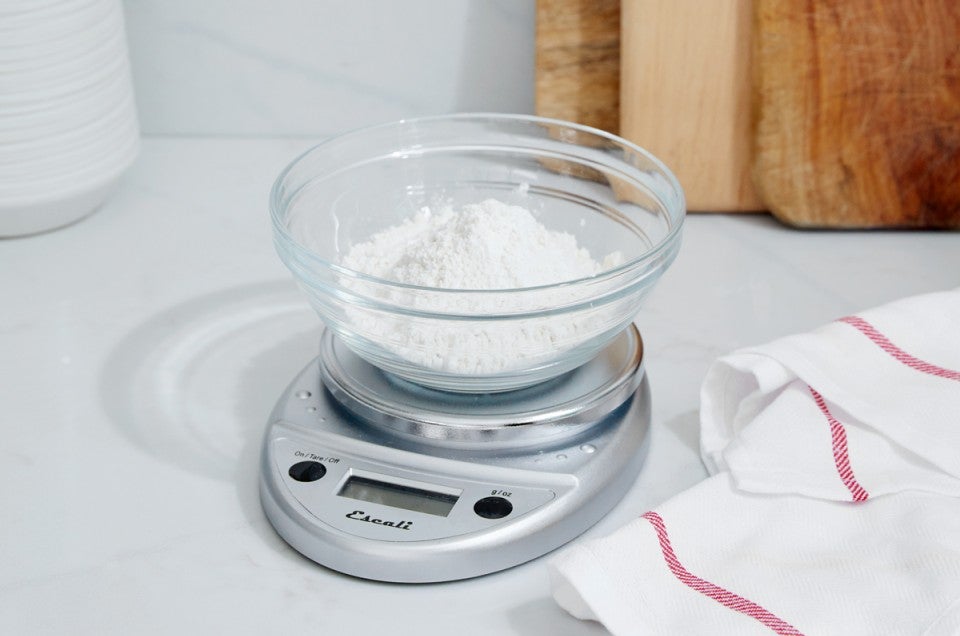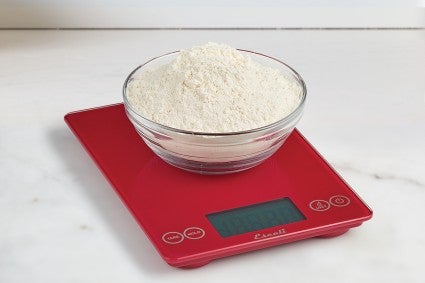


If you learn one skill to bake better, it should be how to measure flour — the right way. It's arguably one of the biggest keys to baking success: When callers dial into our Baker’s Hotline with questions about why their bread turned out dry or their cookies came out crumbly, the first question the Hotline often asks is “How did you measure your flour?”
That’s because a little too much flour can be the difference between a good bake and a not-so-good bake. And if you’re measuring your flour by volume (i.e., with measuring cups), then it’s very likely you’re adding too much flour.
That’s because measuring flour by volume is wildly inconsistent: It all depends on how densely the flour is packed into the cup. If the flour is more condensed, a cup can hold up to 160 grams of all-purpose flour. If you fluff, scoop, and level, as we recommend, a cup will hold around 120 grams.
But if you weigh your flour with a scale? You’ll always get exactly 120 grams of all-purpose flour per cup, precisely as our Test Kitchen (or whoever developed your recipe) intends.
If you succeed in correctly measuring your flour, your baked goods are more likely to be successful, too. And while we recommend always using a scale, using measuring cups works too if you do it the right way. However you choose to measure your flour, here’s how to get it right.

Hit the “Tare” button to make sure your scale is set to 0 grams. (All of our recipes include gram and volume measurements.) Set your measuring bowl, or a separate empty bowl, measuring cup, or other vessel (whatever you’ll be pouring your flour into) onto the scale, then press “Tare” again to set the scale to 0 grams. Scoop your flour into the vessel on the scale — if you’re measuring 1 cup of all-purpose flour, keep scooping until the scale totals 120 grams. Or measure out however much flour the recipe calls for. (Wondering about the weight of other flours and ingredients? Check out our handy ingredient weight chart.)
Generally, you can stay within 5 grams over or under the written amount (for instance, if the recipe calls for 240 grams of flour and you measured out 245 grams), and it won’t affect your recipe. With that said, we recommend being as accurate as possible when measuring flour and all other ingredients.
If you don’t have a scale and need to measure flour by volume, it’s important to use the correct technique. Using our “Fluff, Sprinkle, and Scrape” technique is the best way to make sure you do not add too much flour to your recipes.
Begin by fluffing your flour in its bag or container using a spoon or scoop. The goal here is to lighten and aerate the flour. Spoon the fluffed flour into your measuring cup until it’s overflowing. Use a straight edge (like the back of a butter knife or a bench knife) to evenly level off the top so the flour is even with the top of the measuring cup.
Learn more about baking with a scale: A digital kitchen scale is an essential baking tool.

